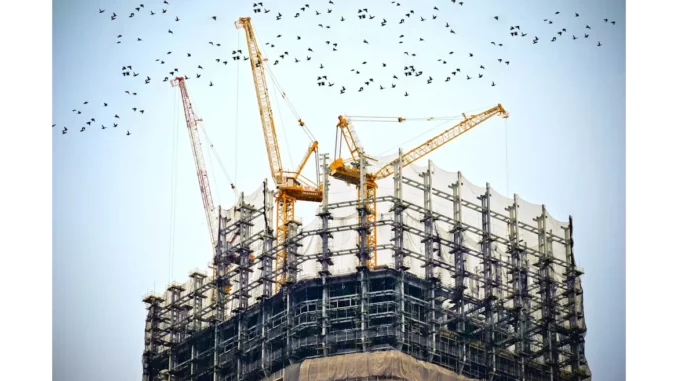
The second quarter of 2024 witnessed a significant surge in new build dwelling completions in England, marking a 12% increase from the previous quarter. This remarkable development has stirred optimism and curiosity within the construction industry. To gain a deeper understanding of this upward trend, I engaged in a detailed conversation with James Mitchell, an experienced project manager at one of the foremost construction firms in England. His insights shed light on the broader implications of this surge for the housing sector and the economy at large.
Focus360 Energy: property compliance services – pre-planning to post-construction. Learn more.
With over a decade of experience in the construction industry, James Mitchell has observed the fluctuating trends in housing with a keen eye. During our discussion in his bustling office, he expressed his enthusiasm about the recent figures. “It’s been quite a journey, especially after the lows during the pandemic and the subsequent economic downturn,” he remarked, highlighting the resilience and adaptability of the industry.
According to the Ministry for Housing, from 1 April to 30 June 2024, new build dwelling completions reached 42,590, reflecting a 12% increase from the first quarter’s 34,630. This growth is not merely a quarterly improvement but also mirrors a 12% rise compared to the same period in the previous year. For Mitchell, these statistics signify more than just numerical growth; they represent a revitalisation and robustness in the housing market. “The 12% increase in completions is a testament to the hard work and adaptability of everyone involved in the construction sector,” he noted. “We’ve navigated new building regulatory standards introduced last year, which initially posed challenges but ultimately streamlined our processes.”
Mitchell elaborated on the new building regulatory standards that came into effect in June 2023, which had initially caused a surge in project starts as housebuilders rushed to comply before the rules were implemented. “That peak in Q2 2023 and the subsequent drop-off were anticipated. We adjusted our strategies and timelines accordingly,” he explained. This adjustment period has now paved the way for a more consistent and sustainable growth pattern in the industry.
The broader trends in new build dwelling starts also came under scrutiny during our conversation. The latest data indicates that new build dwelling starts in Q2 2024 were 22,990, a modest 2% increase from the previous quarter but a striking 65% decrease from the same quarter in the previous year. Mitchell provided context for these figures, attributing the initial rush to start projects before the new regulations to the unusually high number of starts in 2023. “It’s a classic case of feast and famine,” he chuckled. “But now, we’re seeing a more balanced and sustainable growth pattern.”
Recent governmental policies have also played a crucial role in shaping the current landscape. Specifically, the new mandatory housing targets introduced by Angela Rayner in August have provided the industry with a clear direction and purpose. “The government’s ambitious target of 1.5 million homes has given the industry a clear direction and purpose,” Mitchell said. “It’s not just about building houses; it’s about creating communities and addressing the housing shortage.”
Our discussion also touched upon innovative strategies being employed to meet these targets. The reclassification of low-quality green belt land as ‘grey belt’ and the launch of the “Homes Accelerator” initiative are expected to unlock up to 300,000 new homes. “These measures are game-changers,” Mitchell asserted. “They allow us to explore previously untapped areas and expedite the development process.”
As our conversation concluded, Mitchell reflected on the future challenges and opportunities. “We’re not out of the woods yet,” he cautioned. “There are still challenges, particularly with the Building Safety Regulator now overseeing higher-risk buildings. The data on these structures isn’t fully integrated into the current statistics, so we might be undercounting starts and completions to some extent.”
Nonetheless, Mitchell’s optimism remains undeterred. “The 12% increase in Q2 completions is a positive sign. It shows that we’re moving in the right direction, and with continued support from the government and the resilience of the industry, we can achieve even greater milestones.”
In summary, the 12% rise in new build dwelling completions in the second quarter of 2024 serves as a beacon of hope and progress for England’s housing market. It underscores the industry’s adaptability, the efficacy of new policies, and the collective effort to address the nation’s housing needs. As James Mitchell aptly put it, “We’re building more than just houses; we’re building the future.”


Be the first to comment